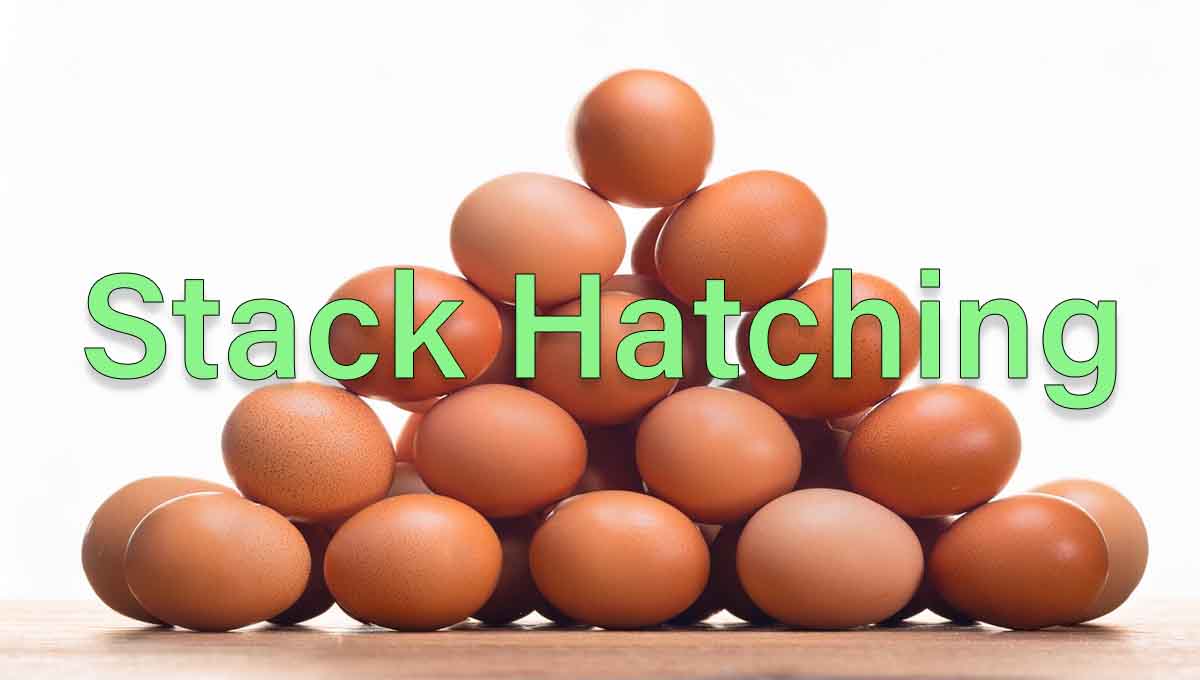For years, poultry enthusiasts have experimented with various incubation techniques to improve hatch rates and simplify the process. One method that has gained traction, particularly among backyard breeders and small-scale hatcheries, is stack hatching. But is this method backed by science, or is it more of a social movement driven by anecdotal success stories? Let’s explore both aspects.
What Is Stack Hatching?
Stack hatching is an incubation technique where eggs are added in layers over several days until the incubator reaches capacity. Unlike traditional methods, it involves no egg turning and minimal handling after an initial candling session on day 10. The process is designed to mimic a broody hen’s natural incubation behavior, where she may continue adding eggs to her clutch while sitting on them.
Stack hatching was originally developed and refined by Shannon, who spent over 10 years perfecting the method. She originally started with 50-60% humidity in Florida but later collaborated with Erika Dehoff to adapt the technique for different climates, such as Pennsylvania.
The Theory Behind Stack Hatching
While stack hatching lacks formal scientific studies, its backers propose biolological concepts to support this method:
- 1. Mimicking Natural Incubation:
In the wild, hens frequently lay eggs over a period of days before fully committing to incubation. By doing so, they create staggered hatch cycles without mechanically turning eggs. This natural incubation behavior is the foundation of stack hatching. - 2. Humidity and Air Cell Development:
Proper humidity levels are crucial for successful hatching. Stack hatching emphasizes monitoring air cells to adjust humidity as needed. Scientific incubation practices confirm that humidity must be adapted based on environmental conditions, supporting the method’s flexibility in different climates. - 3. No-Turning Theory:
Traditional incubation methods recommend turning eggs to prevent the embryo from sticking to the shell membrane. However, some research suggests that as long as humidity and temperature are stable, turning may not be as essential beyond a certain point. Stack hatching removes the need for turning after day 10, allowing embryos to develop without external movement. - 4. Layered Heat Distribution:
The way eggs are stacked creates a slight heat variation between layers. In theory, this mimics how a broody hen naturally incubates eggs—those closer to her body receive more heat, while outer eggs experience slight fluctuations. These microclimate variations may contribute to improved hatch rates.
Studies on the Role of Egg Turning
Turning eggs during incubation is a standard practice in poultry farming to ensure proper embryonic development. While specific studies directly linking egg turning to blood flow in developing chick embryos are limited, existing research provides insights into the importance of egg turning and the development of the chick’s circulatory system.
Importance of Egg Turning:
A study published in Development highlights that turning hens’ eggs between the 4th and 7th day of incubation results in hatchability rates comparable to those of eggs turned throughout incubation. This suggests that turning during this critical period is sufficient for optimal development. The Journal of Experimental Biology
Development of the Chick’s Circulatory System:
The chick embryo’s circulatory system undergoes significant changes during development. Research published in Circulation Research describes the progression of blood flow through the embryonic heart outflow tract during cardiac development, emphasizing the role of hemodynamic forces in cardiac growth and remodeling. PMC
Additionally, a study in Circulation Research discusses developmental hemodynamic changes in the chick embryo, noting that the heart tube begins to pulsate at 33-38 hours of incubation, and blood flow commences at 45-49 hours. American Heart Association Journals
While these studies do not directly link egg turning to blood flow in developing chicks, they underscore the critical role of proper incubation conditions in supporting the development of the circulatory system. Maintaining optimal incubation practices, including regular egg turning, is essential for ensuring healthy embryonic development and proper blood flow in chicks.
Is Stack Hatching Just a Theory?
While there is some biological basis to stack hatching, its popularity has largely been driven by word-of-mouth, online communities, and social media. Enthusiasts share success stories, hatch rates, and troubleshooting tips in forums and Facebook groups, making it a community-driven phenomenon.
Many breeders claim that stack hatching has significantly improved their hatch rates, but the lack of scientific validation means that results are largely anecdotal. Critics argue that without controlled studies, it’s difficult to determine whether stack hatching is truly superior to traditional methods or simply effective due to other factors, such as proper egg handling and incubation consistency.
The Verdict: A Hybrid Approach
Is stack hatching a potential risk or a hidden win for optimal chick development? The answer depends on various factors, including climate, incubator type, and individual experience. While stack hatching has not been rigorously tested in scientific settings, its alignment with natural incubation principles suggests a possible viable alternative to traditional methods. It has become both a technique and a social movement, uniting a passionate community of hatchers eager to share their experiences.
For those interested in stack hatching, the best approach is to experiment, track hatch rates, and adjust conditions as needed. Whether science eventually validates the method or not, its growing popularity shows that real-world experience can sometimes be just as valuable as formal research.
Would you try stack hatching? Join the conversation and let us know your thoughts!



